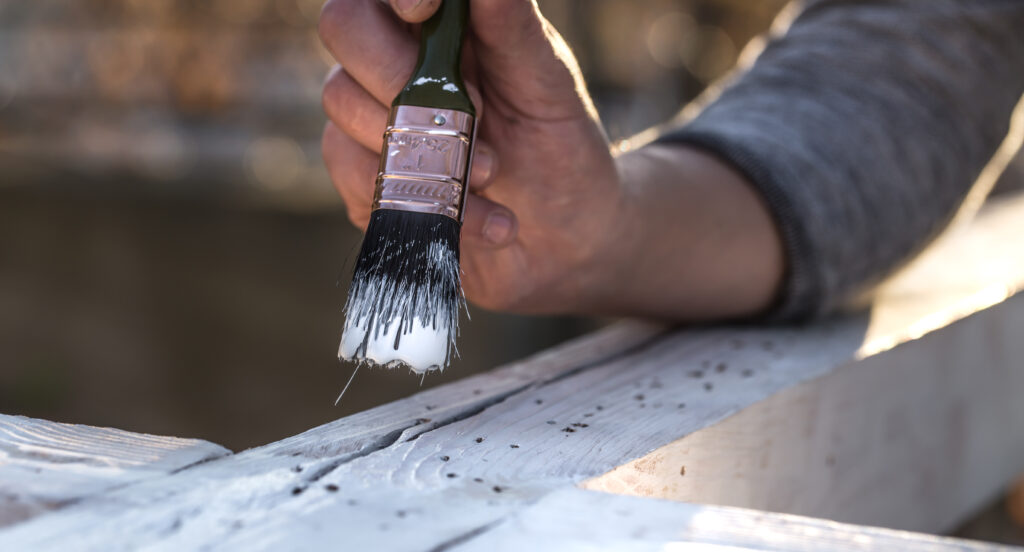Spring cleaning season is in full swing, but if you’re like a lot of people you don’t pay a lot of attention to the outside of your house. Sure, you can get away with just focusing on the inside, but if you’re thinking about selling your house any time soon, it pays to spruce up your home’s exterior, too. From power-washing your driveway to taking care of mildewed siding, here are our top tips for cleaning the outside of your house for maximum curb appeal.
1. Start By Surveying
If it’s been a while since you’ve taken stock of what’s happening with your home’s exterior, start by taking a little walk around the yard, taking note of areas that need attention. Pay special mind to areas of wood rot, mildew, loose fixtures, shifted downspouts or fallen tree branches (these you can clean up as you go). Once you have a list put together of areas that need cleaning, fixing or touching up, it’s time to strategize your cleaning methods.
2. Windows and Power-Washing
If your windows are dirty (and let’s face it, they probably will be), your first thought might be to drag out the power-washer. To be sure, a power washer is a valuable tool in your arsenal, but it might be a little too heavy duty for your windows unless you’re very careful. Not only do you risk breaking a window with a high-pressure nozzle, you can also damage your window casing or trim if you’re dealing with wood rot. To avoid these issues, use only a 40° or wider angle nozzle, hold the sprayer at least a foot away from the surface being cleaned and don’t use a power washer at all if you notice signs of wood decay—the high pressure can blast away more than you intend and lead to a bigger repair or even water intrusion.
If you find you can’t use a power washer on your windows, you can get a window cleaning kit (these are available at any hardware store). Look for kits that include a telescoping handle, microfiber scrubbing pads and a squeegee. To rinse, use a low pressure nozzle attached to a normal garden hose.
3. How to Clean Vinyl Siding
If you’ve got dirty vinyl siding, this is the perfect place to use a power washer. Vinyl siding is very durable and power washing can get the job done fast, but you still have to be careful not to apply too much pressure. Start with a low-pressure nozzle (again, 40° is good) and work from the top down, using side to side sweeping motions. If you have a two-story house that you can’t clean effectively without a ladder, it might be worth it to call in the pros and save yourself some trouble.
If your siding has mold or mildew, power washing alone won’t solve the problem. For this, you can use a long-handled scrub brush and a cleaning solution specifically meant to kill mold and mildew, such as powdered oxygen bleach. You can then rinse with the power washer, but make sure you’re wearing protective eyewear when you do; there’s bound to be some splashback.
Note: Don’t mistake powdered oxygen bleach for traditional liquid bleach—they aren’t the same. Using traditional bleach won’t keep moss from growing back and can damage your lawn or other nearby plants.
4. Brick and Concrete
Again, a power washer can be your friend when it comes to removing some types of stains on concrete, brick and stone pavers. Since concrete is porous, though, certain staining materials like oil need to be drawn out first. Use a drying agent like clay kitty litter to cover any oil, grease or other drips, wait a day for the litter to absorb what it can, then scrub the stain with laundry detergent or a commercial oil stain remover. If this doesn’t remove the stain, you can step up your efforts and use trisodium phosphate (or TSP), available at any home improvement store. Since this is a powerful stain remover and degreaser, it’s important to follow the package directions carefully and use protective gloves when applying it.
For stubborn stains on bricks, you can use a solution of muriatic acid and water—just be careful! Muriatic acid is extremely powerful and can damage plants and other surfaces if not used correctly. First you’ll want to make sure you have protective eyewear, clothing and a respirator to protect your nose, throat and lungs from any fumes. Next, mix your muriatic acid and water in a plastic or glass container (muriatic acid can eat through metal and ceramic so don’t use those). For lighter colored bricks, the ratio to use is 1 part acid to 10 parts water. Up this to 20 parts water for darker bricks.
Next, cover any plants around where you’ll be working, saturate the area to be cleaned with a hose and carefully apply the acid solution without splattering, working from top to bottom. Leave the acid to work on the stains for 6 minutes, then rinse dark brick well with a garden hose. For lighter colored bricks, rinse first with a solution of baking soda and water.
Call National Property Inspections for a Full Home Assessment
Your local NPI inspector has the professional training and experience to help assess the condition of all your home’s structures and major systems. Give them a call today to schedule you pre-listing or homebuyer’s inspection.



